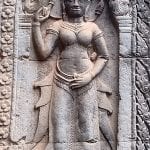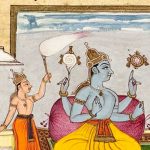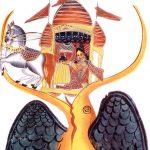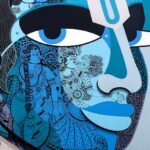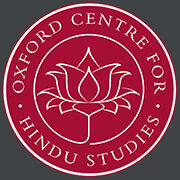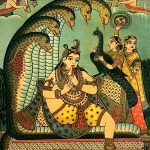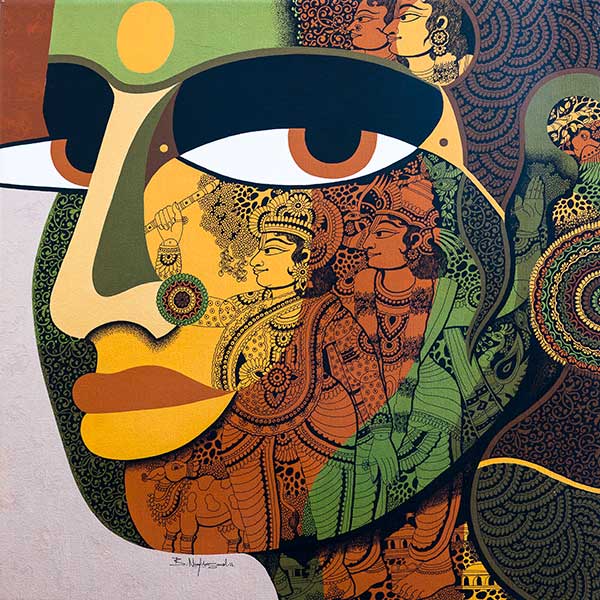Hinduism and Popular Religious Art
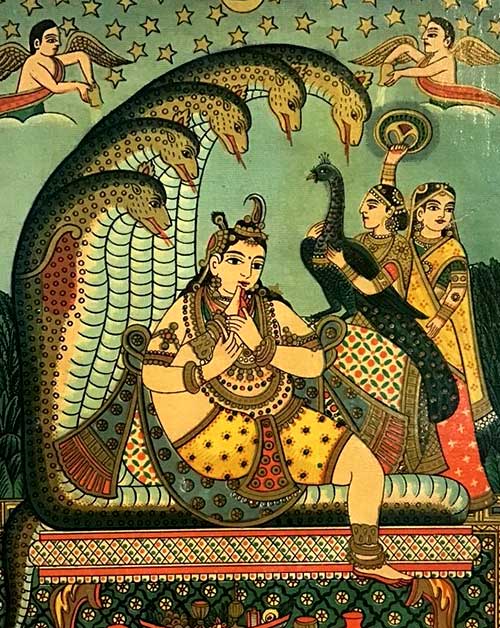
Join us on this visually striking course exploring Hinduism and popular religious art over the past two centuries and more. With more than 25 hours of richly illustrated video we learn the story of India’s use of modern technologies to reimagine the sacred in vibrant and unexpected new ways.
This course uniquely combines religious studies and art history to better understand a flourishing culture. From trade labels, to Bollywood (and other centres of cinema) “mythologicals”, to graphic novels we look at technique, design, and aesthetics. We also pay close attention to representations of the divine and how religious art mirrors an everchanging Hindu social structure.
How has printing affected traditional folk arts? How is Hinduism represented in Bollywood, comics, and graphic novels? What is the impact of colonialism on Hindu visual culture? What role did Hindu art play in Indian Independence? And how have sacred narratives evolved in Hindu cinema?
Dr Layne Little shares his enthusiasm and deep knowledge in this fascinating online course. For more on this course and some taster videos, see below. For more courses on Hindu Culture, click here.
Start Date: Any time!
Self-Taught Course
Number of Sessions: Eight
43 pages. This course contains a shorter pdf textbook than most of our courses. It does, however, have more than 25 hours of richly illustrated video.
On-Demand Video
The main video component of your course. On-demand means you can watch at the time that suits you.
25hr 23min
Campus-Wide Zoom Sessions
You will also be invited to join five general-interest Zoom sessions. These are open to all enrolled students and cover a range of topics related to Indian thought and philosophy.
They are a great way to meet students and tutors from other courses!
Self-taught Course
£95
Associated Courses
Introduction: Hinduism and Popular Religious Art
Much of modern Hinduism and its popular religious art arises in response to colonialism and European aesthetics. In this first session, we will explore how history has shaped the course of modern Hindu art. This comprehensive introduction gives us a visually rich overview of the course ahead.
1-2: Early Lithography of Calcutta
This first two sessions will focus on the development of lithographic art in Calcutta (now Kolkata). We will explore traditional folk arts influencing early printing workshops in the region and see how iconography and Indian aesthetics find expression in a new modern technological medium. We will also examine how the religious imagination is changed by print art in a variety of ways responding to market demands and other social shifts in communal and political spheres.
3: Lithography and Politics in Bombay
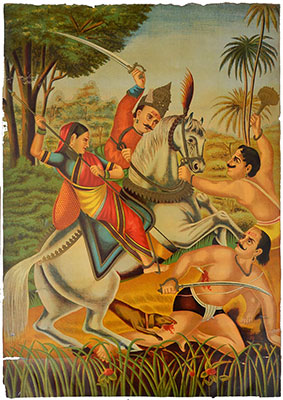 At the same time as the new presses are thriving in Calcutta, they are also making a great impact in Bombay (now Mumbai). While Calcutta was a colonial center flourishing through trade, Bombay increasingly saw British colonial expansion through the same lens that it viewed Mughal domination. In this session, we will turn to the more overt political element that shaped the advent of lithography here.
At the same time as the new presses are thriving in Calcutta, they are also making a great impact in Bombay (now Mumbai). While Calcutta was a colonial center flourishing through trade, Bombay increasingly saw British colonial expansion through the same lens that it viewed Mughal domination. In this session, we will turn to the more overt political element that shaped the advent of lithography here.
4: Trade Labels
Trade labels are an important form of lithography that appears at the same time as the early prints we have been discussing. In this session, we see the intersection between Hindu lithography, the textile trade, and advertising as we explore how trade labels first appeared alongside prints and lithographs in the late 19th century and was at the heart of what has been called “a trade war in pictures.”
5: The Branding of Raja Ravi Varma – Turn of the Century Transitions in the Popular Arts
In this session, we explore the life and art of Ravi Varma, India’s most famous painter and the story of the press that he founded. Ravi Varma’s training in European painting techniques makes the gods come alive while the artist employs some “sly civility” to depict powerfully striking moments in Hindu epic lore to offer a subtle but powerful critique of colonialism.
6: Miraculous Mythologicals
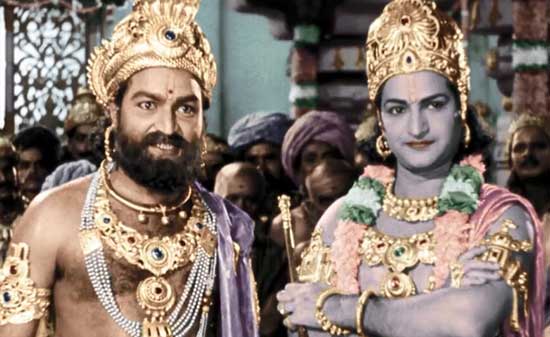
This week, we will immerse ourselves more fully in the world of print culture, a very particular form of “bazaar art” rooted in social critique, political dissent, and reform. We will explore how popular art reimagined India as the anthropomorphised goddess, Bhārata Mātā, through a vast stream of allegoric images that galvanised the movement towards Indian Independence and helped shape a collective vision for a new and modern India.
7: Bharata Mata
We turn our attention to that peculiar genre of cinema that Indian scholars of film studies refer to as “mythologicals.” Beginning with the profound influences of Parsi theater, we will trace the history of Hindu cinema to gain some insight into the ways in which it has reimagined sacred narrative in what is most certainly the dominant and most diverse form of Hindu visual culture.
8: Comics in India
For our final session we turn to one of the most vibrant mediums of Hindu popular culture: comics and graphic novels. We look at graphic novels that offer strikingly sophisticated and socially poignant takes on the Hindu mythological genre as great contemporary artists and authors reveal the innermost depths of their being through amazingly innovative new ways of visual storytelling.

Associated Courses
Course Creator

Dr Layne Little
Layne teaches Hinduism, Buddhism, Esoterism, and Religion and Popular Culture at U.C. Berkeley and at California State University: Sacramento. He wrote the “Hinduism” and “Buddhism” chapters in Oxford University Press’ newest world religions textbook, Invitation to World Religions. He is co-author of OUP’s Invitation to Western Religions and Invitation to Asian Religions. In addition, he has published numerous articles on Śaiva Siddhānta, Tamiḻ Literature, and Siddha Tantrism.
